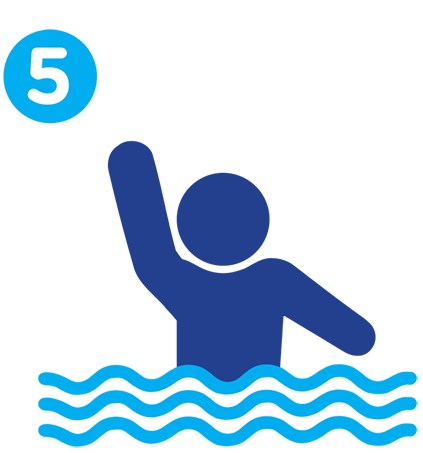
5 Simple Steps
In an emergency water situation, the most important thing to remember is to stay calm. Floating helps you conserve energy and breathe easily while waiting for help. Here’s how to do it in just five simple steps:
1. Lean your head back and float
Gently tilt your head back (with your chin lifted) so that your face is above the water. This position keeps your airway clear and helps you breathe more easily. Don’t worry if your ears go underwater—that’s normal.
2. Control your breathing and keep calm
Focus on slow, deep breaths.
Breathing calmly will help you reduce fear and stay afloat.
The calmer you are, the easier it is to float.
3. Spread your arms and legs for balance
Extending your arms and legs distributes your weight evenly, helping you stay stable while floating. It’s ok if your legs sink, we all float differently.
4. Use a circular motion to maintain buoyancy
Use gentle movements to help you balance and stay afloat. Slowly move your arms and legs in a sweeping motion. You can use active floating to transition from floating on your back to your stomach and treading water.
5. Signal for help
Once you’re stable in the water, try to attract attention.
Raise one arm above your head, waving it slowly back and forth while keeping your head tilted back to stay afloat. Shout for help if someone is close by.





